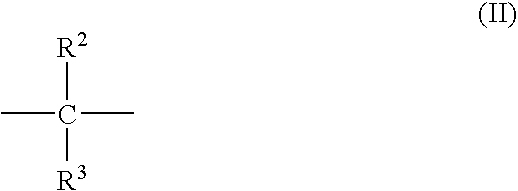Method for forming a fuel cell electrode using a resole binder
a fuel cell and electrode technology, applied in the direction of cell components, metal/metal-oxide/metal-hydroxide catalysts, physical/chemical process catalysts, etc., can solve the problems of affecting the application and longevity of electrodes, and the manufacture of electrodes interferes with the application of electrodes. , to achieve the effect of limiting the operating efficiency or operating life of the electrod
- Summary
- Abstract
- Description
- Claims
- Application Information
AI Technical Summary
Benefits of technology
Problems solved by technology
Method used
Image
Examples
Embodiment Construction
[0015]The present invention provides a method for forming a fuel cell electrode. The method comprises combining an electrically conductive material and a solid grindable resole binder, the binder being essentially free of nitrogen and nitrogen-containing compounds, and consolidating the electrically conductive material and the resole binder to form the fuel cell electrode. The use of a solid, grindable, nitrogen-free and nitrogen-containing compound-free resole resin binder serves to increase the operating life of the electrode.
[0016]The electrically conductive material may comprise crystalline carbon particles (e.g., graphite), amorphous carbon particles (e.g., carbon black), or mixtures thereof. The carbon particles may be in various physical forms including powders, flakes and fibers. Preferably, the electrically conductive material comprises graphite.
[0017]The choice of binder for use in the method of the invention is critical. Phenolic resins are particularly advantageous when ...
PUM
| Property | Measurement | Unit |
|---|---|---|
| Temperature | aaaaa | aaaaa |
| Temperature | aaaaa | aaaaa |
| Temperature | aaaaa | aaaaa |
Abstract
Description
Claims
Application Information
 Login to View More
Login to View More - R&D
- Intellectual Property
- Life Sciences
- Materials
- Tech Scout
- Unparalleled Data Quality
- Higher Quality Content
- 60% Fewer Hallucinations
Browse by: Latest US Patents, China's latest patents, Technical Efficacy Thesaurus, Application Domain, Technology Topic, Popular Technical Reports.
© 2025 PatSnap. All rights reserved.Legal|Privacy policy|Modern Slavery Act Transparency Statement|Sitemap|About US| Contact US: help@patsnap.com



